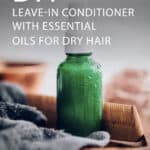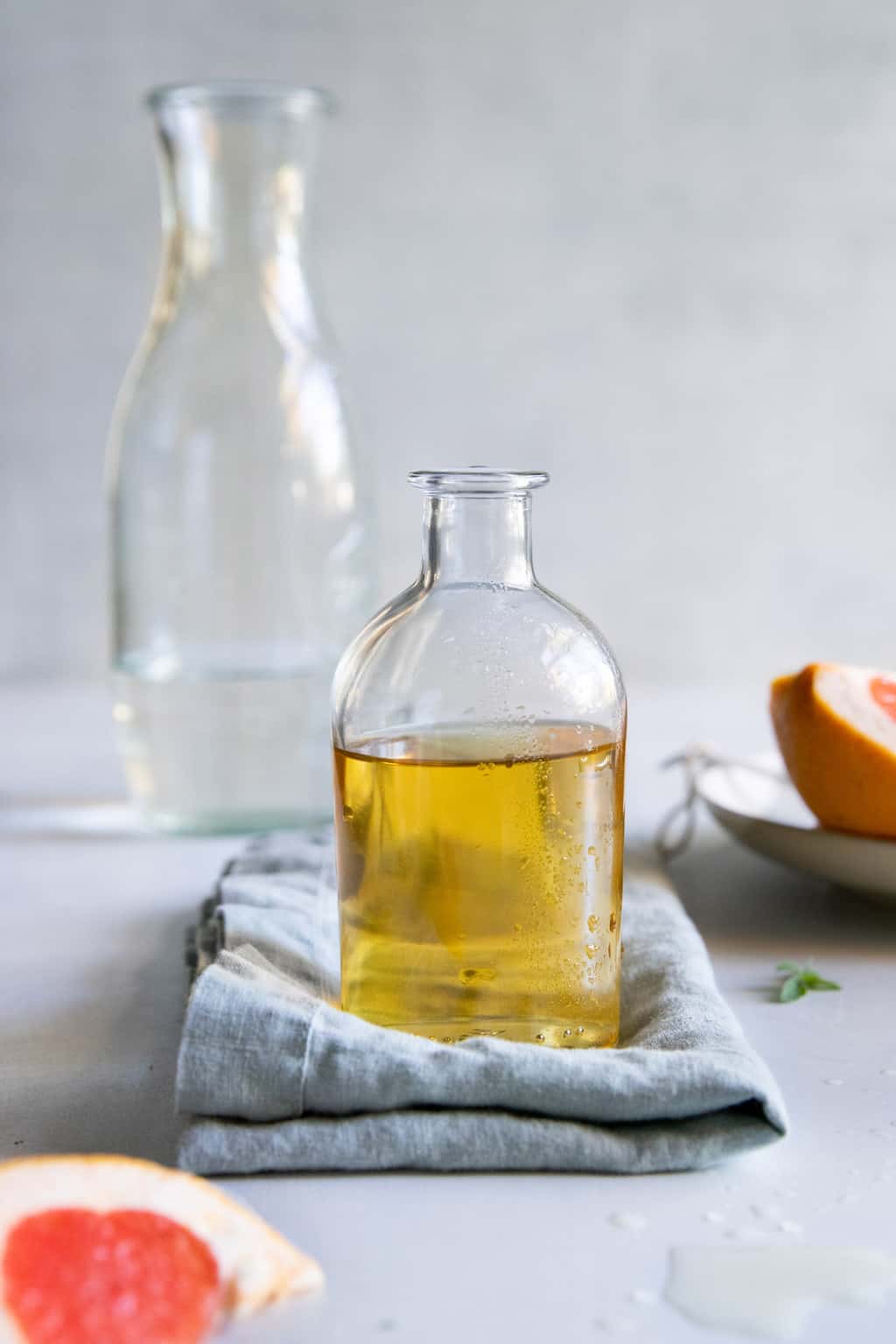Take your parched strands from brittle to brilliant with this DIY leave-in conditioner spray made with hair-strengthening argan oil and coconut milk. And a hydrating blend of coconut oil with the best essential oils for dry hair to control frizz and prevent breakage.
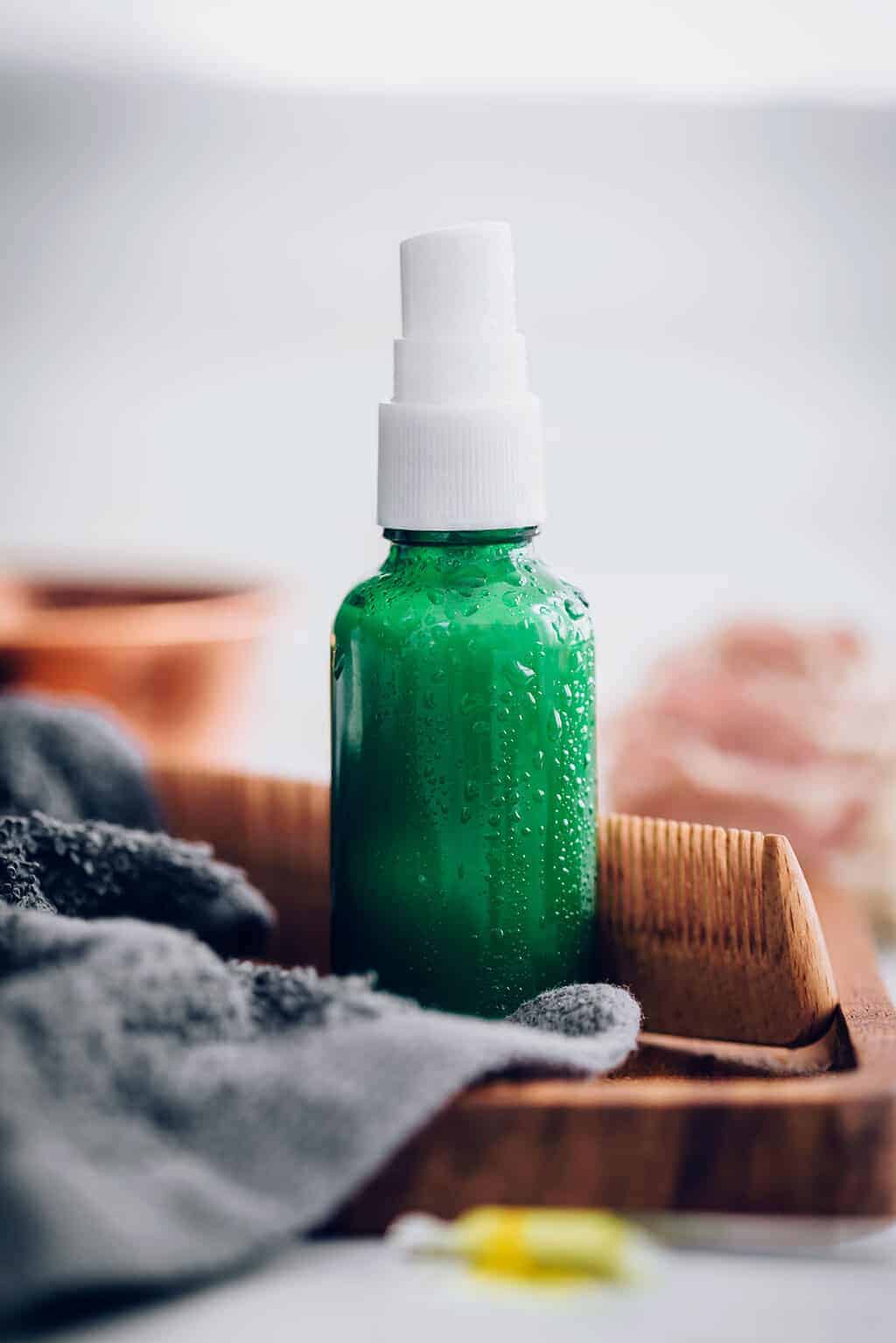
My hair takes a beating over the summer with hours spent in the swimming pool combined with trips to the beach. And when it's dry, it turns into a hot, frizzy mess.
This spray recipe was inspired by this mega-moisturizing deep hair conditioner. It uses the coconut and argan oils but leaves out the heavier shea butter to prevent it from weighing down your hair. It works as a conditioner, detangler, shine spray, heat protectant, and frizz spray all in one.
Ingredients
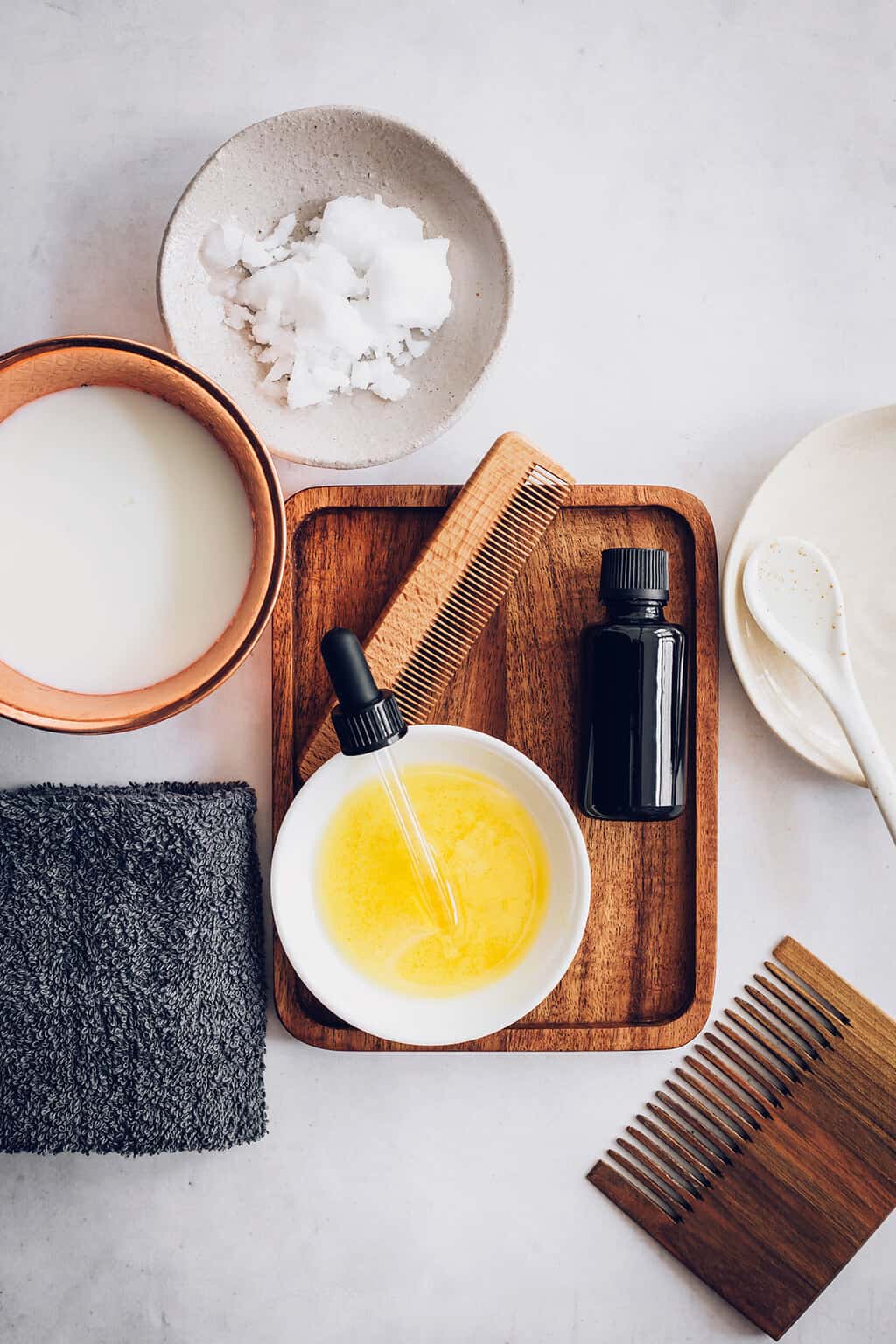
Coconut milk — The high fat content, proteins, and vitamin E in coconut milk nourish hair from roots to ends, helping to restore thinning hair, split ends, and dry, damaged hair.
You can use it in homemade shampoo or as a leave-in conditioner to thicken strands and provide volume without making hair greasy.
Argan oil — Argan is great for controlling frizz and adding shine to dull hair. It has also been said to help thicken hair and prevent thinning.
Jojoba oil — This oil works as a conditioning agent that prevents breakage, even in chemically treated hair [source]. Use it to both add condition and tame frizz.
Fractionated coconut oil — Coconut oil is great for just about everything (we even use it in hairspray). It has been shown to help prevent protein loss from hair [source] and to ward off scalp infections. Use fractionated coconut oil so the conditioner doesn't solidify.
Geranium essential oil — For dry hair, geranium is especially helpful because it naturally conditions while helping to balance oil production by the scalp.
Ylang ylang essential oil — A deeply moisturizing oil, ylang ylang has been used to promote healthier hair growth, and it adds a beautiful floral fragrance to your hair.
See the recipe card below for quantities.
Instructions
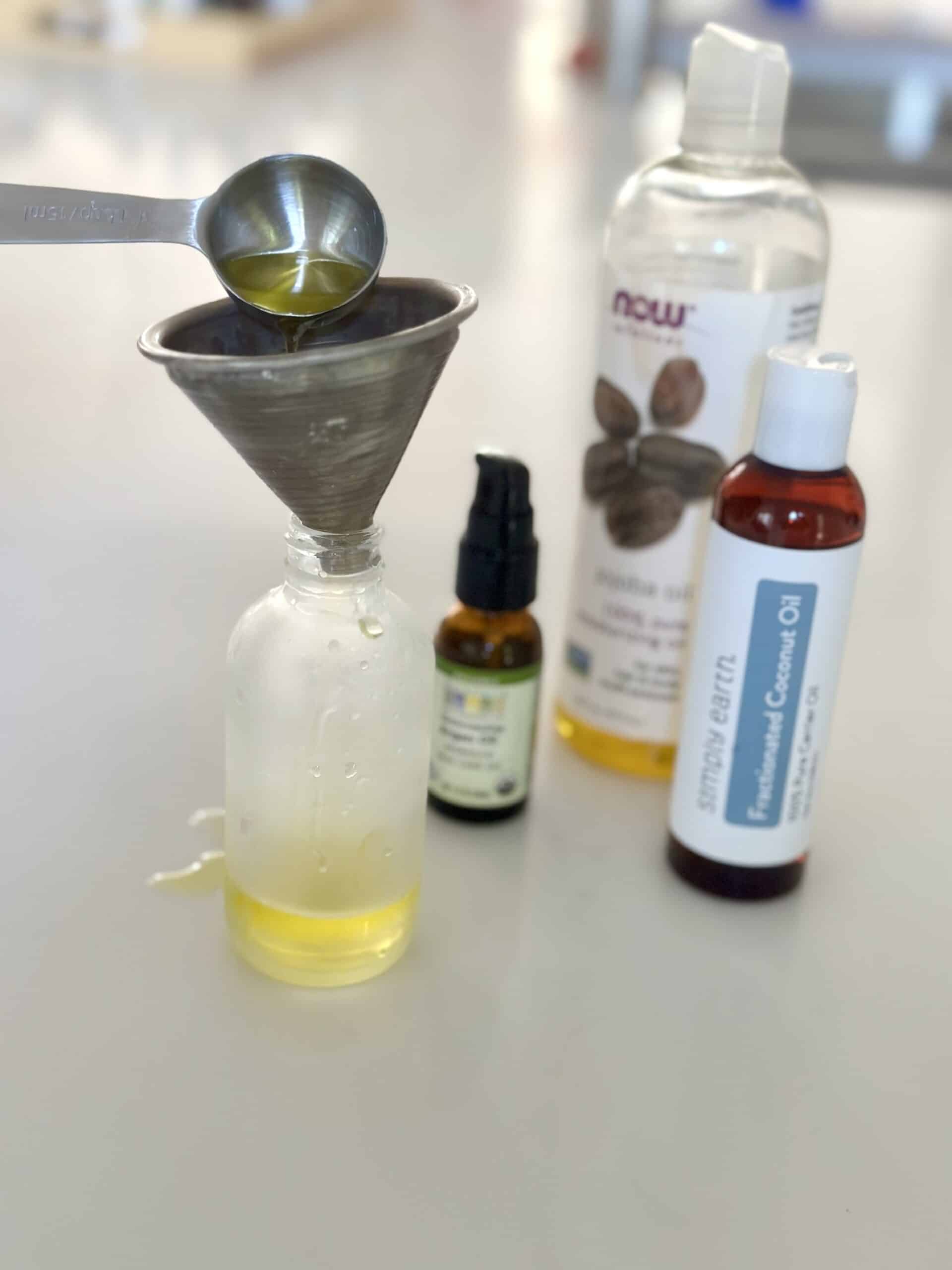
Add the argan and coconut oils to an empty 8-ounce spray bottle, and then add 24 drops of a hair-approved essential oil and swirl together. If you're growing your hair, try this hair growth essential oil blend.

Add the coconut milk. Then, swirl the bottle to fully combine the oils and milk.
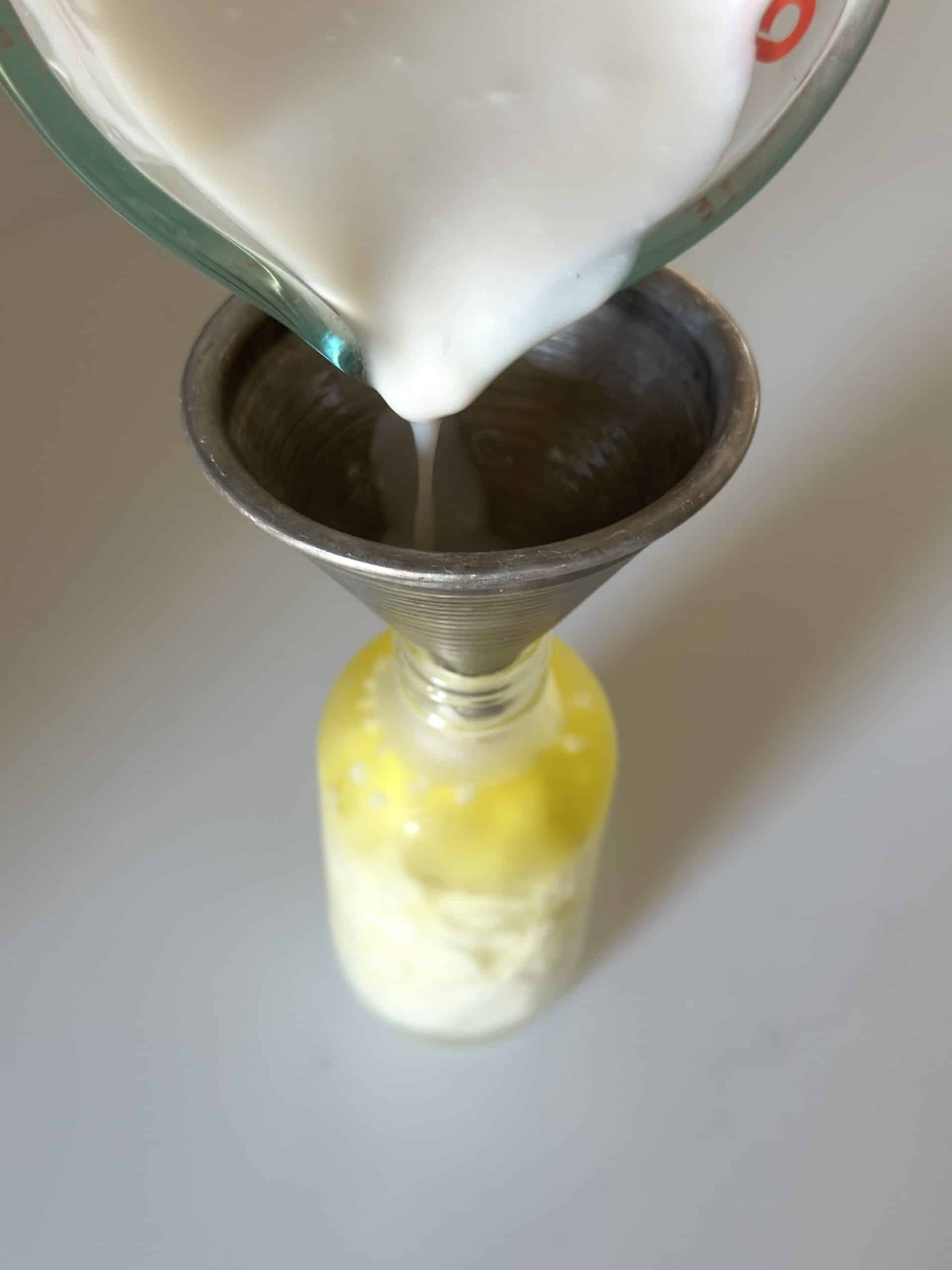
Replace the cap and shake to combine.
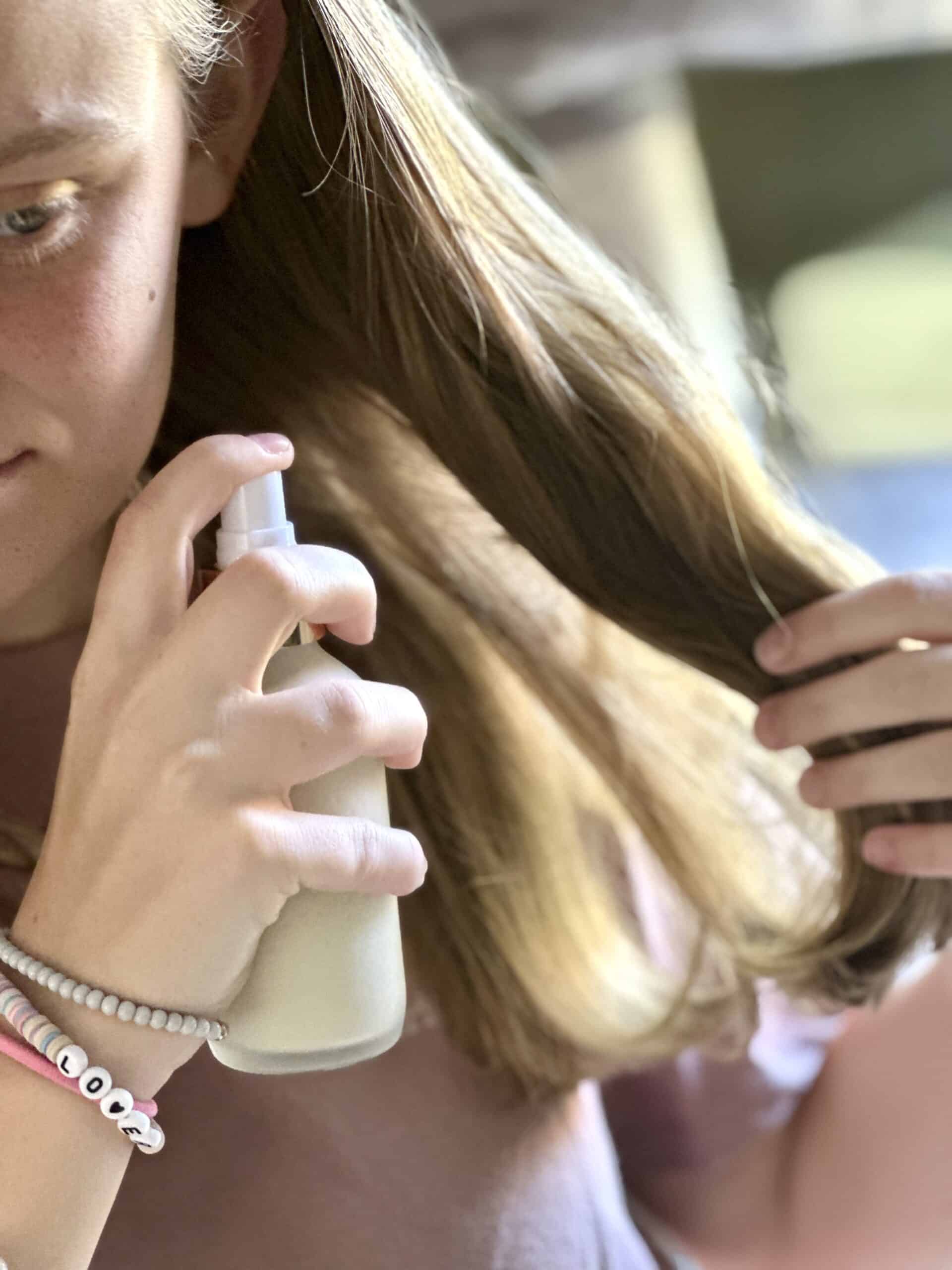
Shake each time before using, then spritz your conditioner directly onto the hair, concentrating on the ends.
Hint: If you open the can of coconut milk and it's solid, then first pour it into a bowl and then whip it to get a smooth texture. After mixing up the conditioning spray, use the leftover coconut milk for an immediate hair mask. Or feel free to make some chia pudding!
Substitutions
One of the advantages of DIY leave-in conditioners is that you can tailor them to suit your hair type. You can adjust the ingredients and their proportions based on your specific needs.
Coconut milk - You can replace this with water, aloe vera, or a hydrosol like lavender water.
Argan oil — Instead of argan oil, you can use another hair conditioning oil, like jojoba. Or use aloe vera if you're worried about weighing down your hair.
Essential oils for dry hair — These essential oils will help hydrate hair, but you can also pick ones for oily hair or hair growth.
- Lavender has been shown to promote hair growth [source] and to have anti-inflammatory activity [source] in animal studies. By addressing inflammation, using this oil will improve the scalp environment, leading to healthier, more manageable strands.
- Sandalwood is a luxurious oil known for its moisturizing properties that can help nourish and hydrate dry hair, leaving it soft and manageable. It has also been shown to have properties that protect the skin against oxidative stress [source].
- Clary sage is thought to have abundant hydrating properties, making it an excellent choice for dry hair. It helps condition and nourish the hair follicles, reducing frizz and adding shine.
- Patchouli is rich in antioxidants [source] and works to improve hair texture and hydration. It helps seal in moisture, preventing further dryness and promoting healthier-looking hair.

Making a DIY leave-in conditioner is a simple process of combining a few ingredients and transferring the mixture into a spray bottle. Here are a few ways to shake things up:
5 Recipe Variations
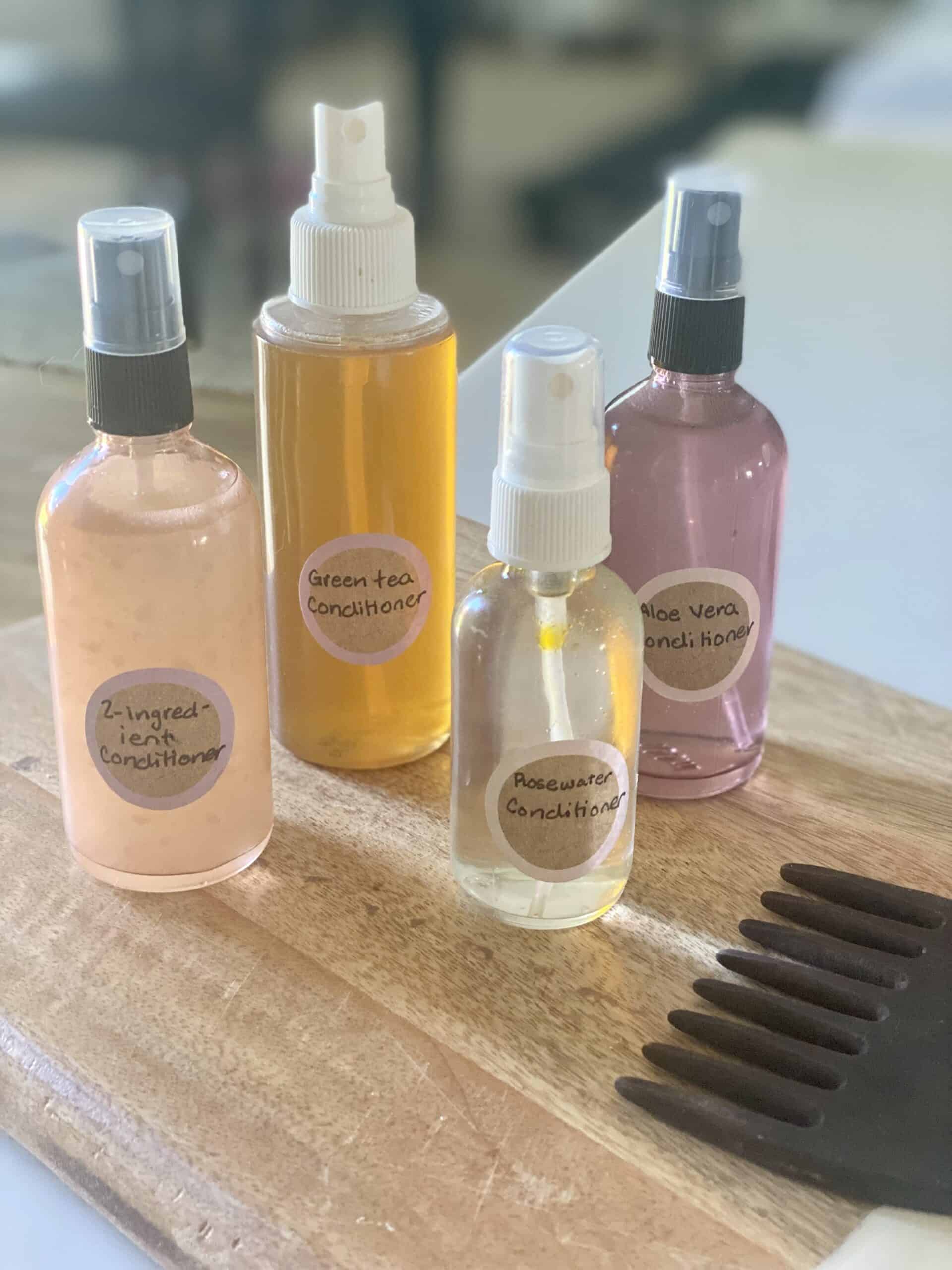
1. 2-ingredient hair conditioner
Mix 6–9 drops of rosemary, geranium or sandalwood essential oil with 1–2 tablespoons of your regular conditioner in an 8-ounce bottle. Fill with water and swirl until the conditioner is fully combined.
2. Aloe vera hair mist
Mix 1 cup distilled water, 1 tablespoon aloe vera gel, and 5–7 drops of essential oil in a spray bottle. Shake well before each use, and spritz it onto your dry hair throughout the day to revive and hydrate your locks.
3. Rosewater and glycerin leave-in conditioner
Mix ¼ cup of rosewater with 1 tablespoon of vegetable glycerin. Add a few drops of rose essential oil for a pleasant scent or another essential oil for hair. Pour the mixture into a spray bottle and shake well before use. Apply to damp hair.
4. Green tea and honey leave-in conditioner
Steep 2 green tea bags in 1 cup of hot water for about 10 minutes. Remove the tea bags and let the tea cool.
Add 1 tablespoon of honey to the cooled green tea and stir until well combined. Pour the mixture into a spray bottle and use it as a leave-in conditioner on damp hair.
5. Whipped shea butter leave-in conditioner
Melt 2 tablespoons of shea butter in a microwave or double boiler. Add 1 tablespoon of argan oil to the melted shea butter and stir until well combined.
Let the mixture cool and solidify slightly. Use a hand mixer or whisk to whip the mixture until light and creamy. Take a small amount and apply it to damp or dry hair as a leave-in conditioner.
Or use one of these DIY summer hair sprays to protect your hair from sun and heat.
Using Leave-In Conditioner
How and when to use leave-in conditioner really depends on your hair type, so you'll have to experiment with the amount and how you apply it. But these tips will get you started:
1. Wash and gently towel dry your hair to remove excess moisture.
2. Spray the leave-in conditioner on your hair, concentrating on the ends. If you have thin or oily hair, it's best to avoid the roots since conditioner can weigh down your hair. If you don't, apply it to roots as long as it works for you and your hair type.
3. Comb through your hair using a wide-tooth comb.
4. Let your hair air-dry or style as usual.
You can apply a DIY leave-in conditioner to both damp and dry hair. For damp hair, it helps to distribute the conditioner evenly and provides additional moisture. On dry hair, it can help with detangling and adding shine.
How often to use leave-in conditioner depends on your hair's needs and your personal preference. Some people may find it beneficial to use a leave-in conditioner with essential oils daily, while others may prefer using it a few times a week.
I spray it onto the ends of my hair each time I wash my hair to get both its conditioning and detangling benefits. Start with a frequency that feels comfortable for you and adjust as needed.
Top tip
You'll want to keep the coconut milk conditioner spray in the refrigerator, so just set it out on the counter for a few minutes before you plan to use it to let the ingredients soften. Then shake again to combine them and spritz directly onto the hair, concentrating on the ends.
FAQ
Canned coconut milk only lasts a few days, even if refrigerated. I recommend keeping it in the fridge for up to a week and then making a fresh batch. To make it last longer, switch out the coconut milk for hair conditioner, aloe vera, or rosewater.
Yes, it should be helpful. If you're especially concerned, test it on a small patch of hair to verify the colorfastness before applying all over.
Yes! In fact, that's what we used.
If you're going to use a preservative, I recommend using a full-spectrum one made specifically for homemade beauty products, like Leucidal Complete.
Yes, you can skip the coconut milk entirely, but that will affect the texture of your conditioning spray. You might need to adjust the other ingredients in order to find a blend you like.
The outcome depends on the specific recipe and the ingredients used. Some recipes may be heavier or greasier, especially if you have fine or oily hair. You can experiment with different recipes and adjust the ingredient proportions to find the right balance for your hair.
A DIY leave-in conditioner is not a substitute for a regular conditioner. Regular conditioners are designed to be rinsed out after a few minutes, whereas leave-in conditioners are meant to be left on the hair without rinsing.
Coconut Milk Leave-In Conditioner Recipe
Equipment
- 4 oz spray bottle
Materials
- 1 teaspoon fractionated coconut oil
- 1 teaspoon argan oil
- 1 tablespoon jojoba oil
- 10 drops ylang ylang essential oil
- 14 drops geranium essential oil
- 4 ounces full-fat coconut milk
Instructions
- Combine jojoba, argan, and fractionated coconut oil in small spray bottle Add essential oils.
- Fill the rest of the bottle with coconut milk. Replace the cap and shake to combine.
- To use, spritz directly onto damp hair, concentrating on the ends. Comb through and leave on.
Notes
References
Dias TC, et al. Protective effect of conditioning agents on Afro-ethnic hair chemically treated with thioglycolate-based straightening emulsion. J Cosmet Dermatol. 2008.
Rele AS, et al. Effect of mineral oil, sunflower oil, and coconut oil on prevention of hair damage. J Cosmet Sci. 2003
Lee BH, et al. Hair growth -promoting effects of lavender oil in C57BL/6 mice. Toxicol Res. 2016.
Da Silva GL, et al. Antioxidant, analgesic and anti-inflammatory effects of lavender essential oil. An Acad Bras Cienc. 2015.
Kolanthan VL, et al. Clinical evaluation of Indian sandalwood oil and its protective effect on the skin against the detrimental effect of exposome. Cosmetics. 2022.
Swamy MK, et al. A comprehensive review on the phytochemical constituents and pharmacological activities of Pogostemon cablin Benth.: an aromatic medicinal plant of industrial importance. Molecules. 2015.

